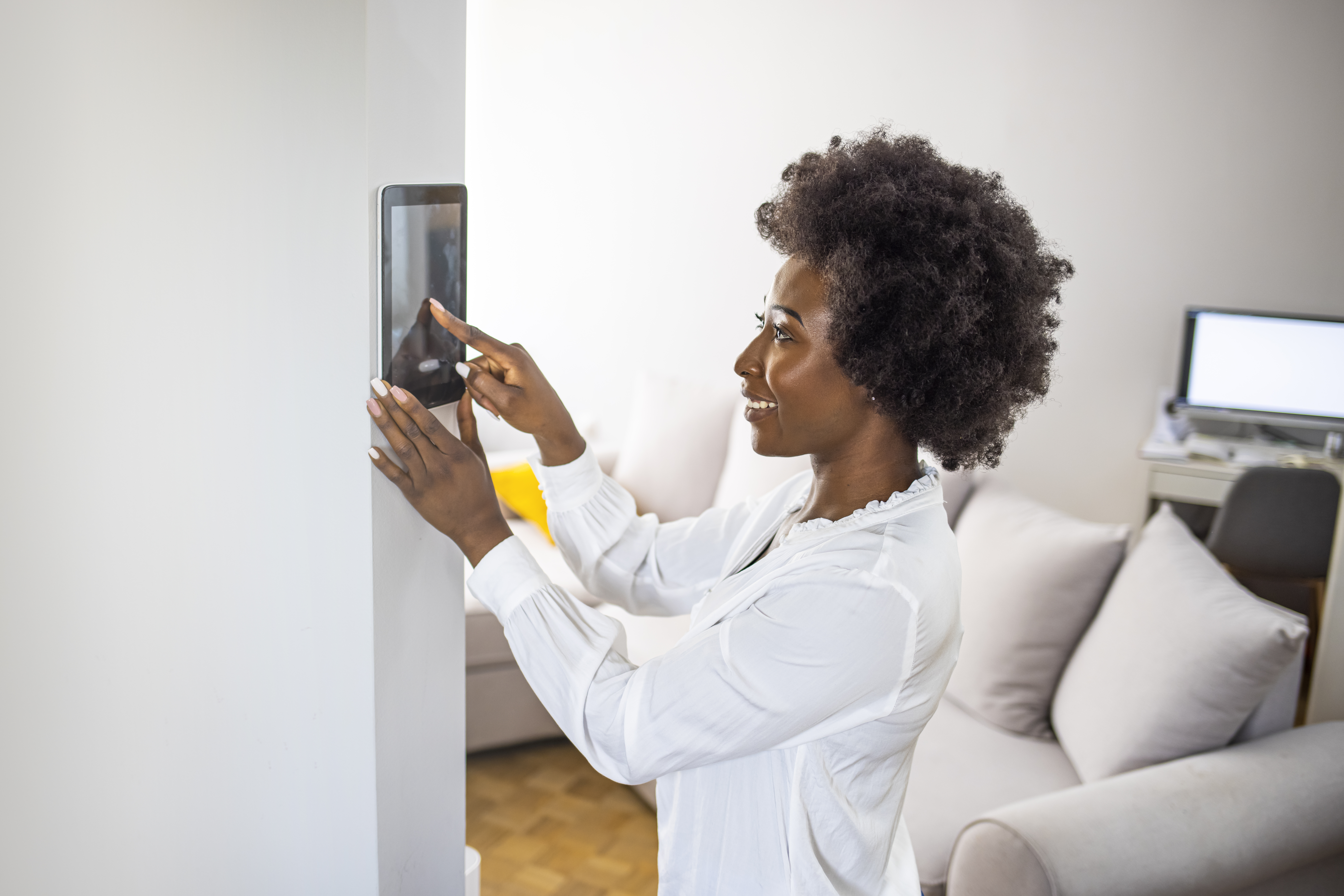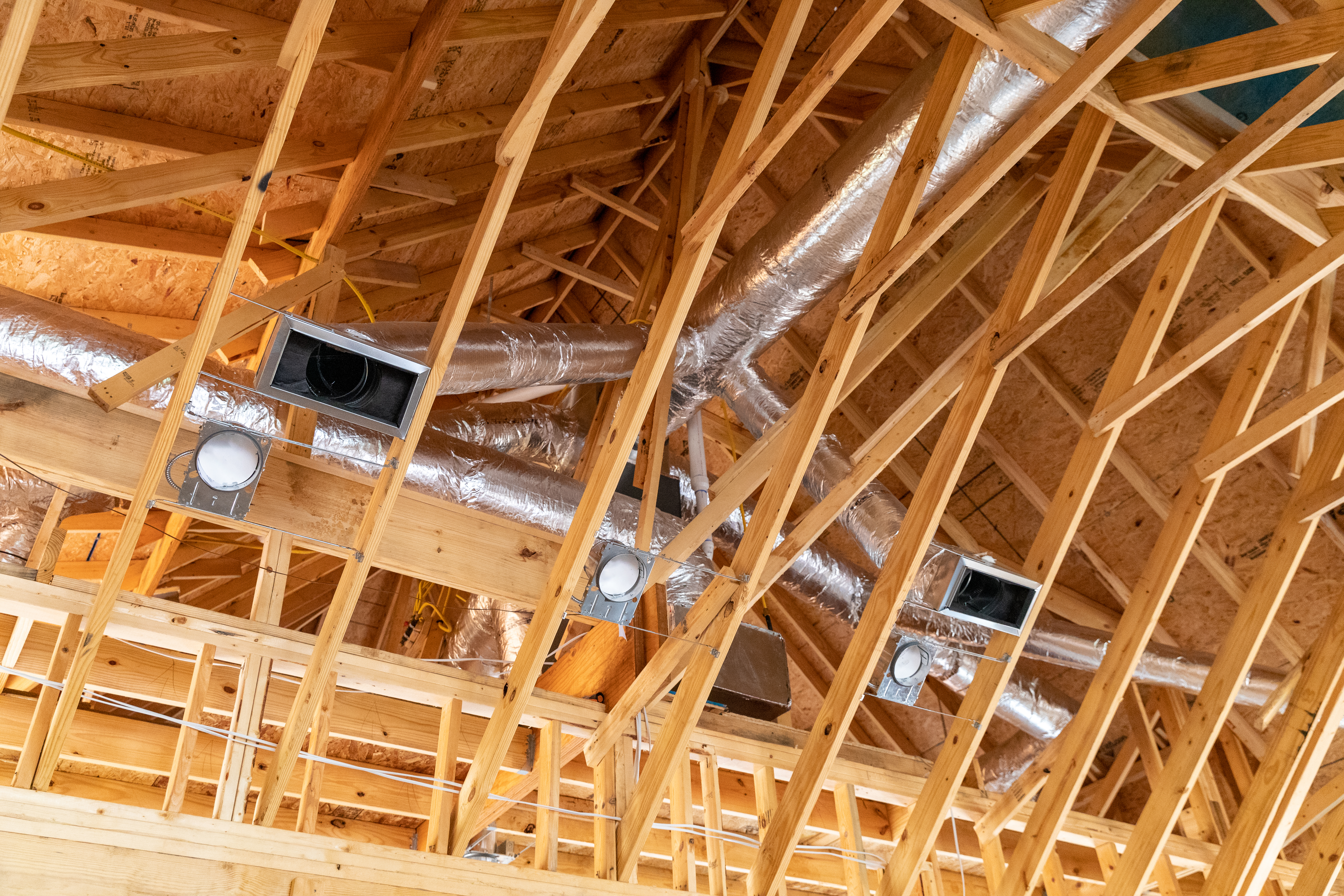Ever wondered what’s really going on behind the scenes when you crank up the heat on a chilly winter day or blast the AC to cool off in the summer? Your heating, ventilation, and air conditioning system (HVAC) is like the lungs of your home, working tirelessly to keep you comfortable and breathing easy all year long.
When that happens at the turn of a thermostat dial, it’s easy to take your HVAC system for granted. Many homeowners don’t know how their system works, and often we don’t even think about it until something goes wrong. But understanding how your HVAC works isn’t just for tech geeks — it’s the key to keeping your home comfy, your energy bills low, and your air fresh and clean.
Components of a typical HVAC system
Heating and cooling systems are complex networks of components designed to regulate the temperature, humidity, and air quality in your home. Here’s a quick overview of the key components:
-
Furnace or heat pump: These are the primary sources of heat in your home. A furnace burns fuel (usually gas) to generate heat, while a heat pump transfers heat from the outside air (even in cold weather) to warm your home.
-
Air conditioner: The air conditioner cools your home by removing heat from the indoor air and releasing it outside. It uses a refrigerant to absorb and transfer heat. If you have a heat pump, it also works to cool your indoor air.
-
Condenser: As part of the air conditioning process, the condenser coil releases the heat absorbed from inside your home into the outdoor air. When the refrigerant passes through the coil, it cools down and turns back into a liquid, ready to absorb more heat.
-
Ductwork: A network of ducts distributes warm or cool air throughout your home. Properly sealed and insulated ductwork is essential for efficient airflow and temperature control.
-
Thermostat: The thermostat is the control center of your HVAC system. It communicates your desired temperature to the system to maintain that temperature.
-
Air filters: Air filters trap dust, pollen, and other particulates to keep them from entering your HVAC system. Regularly replacing air filters is essential for maintaining indoor air quality (IAQ) and system efficiency.
Each of these components works together to keep your home at a comfortable temperature, no matter the weather outside.
How a tuned-up HVAC improves indoor air quality
Your HVAC system doesn’t just keep you and your family comfortable. It also reduces the contaminants in your home’s air through:
-
Ventilation to remove stale indoor air and replace it with fresh outdoor air.
-
Air filtration that captures airborne particles such as dust, pollen, pet dander, and even bacteria.
-
Humidity control that maintains ideal humidity levels, preventing environmental and health issues created by overly moist or dry air.
How to properly size your HVAC system
To accomplish your home comfort and IAQ goals, you need the right size HVAC system for your home. An HVAC system that is too large or too small can lead to a host of issues, including:
-
Inefficiency: A system that is too large will cycle on and off frequently, wasting energy and increasing your utility bills. A system that is too small will struggle to maintain the desired temperature, leading to overworking and potential breakdowns.
-
Temperature fluctuations: Incorrectly sized systems can cause uneven heating or cooling, with some rooms being too hot or too cold.
-
Increased wear and tear: Constant cycling or overworking of an improperly sized system can lead to more frequent repairs and a shorter lifespan for your equipment.
To avoid these issues, have a professional perform a load calculation, which takes into account factors such as the size of your home, insulation levels, and local climate.
How to keep your HVAC running efficiently
Right-sizing your HVAC system is just one way to keep your energy costs in line. After all, these systems are among the largest consumers of energy in your home and have a direct impact on your utility bills. According to the U.S. Department of Energy’s ENERGY STAR program, heating and cooling can make up as much as half of your annual energy costs.
Maximizing your HVAC system’s efficiency doesn’t have to be complicated. Start by following these few simple tips:
-
Regularly replace air filters: Clogged filters force your system to work harder, reducing efficiency. Panasonic experts advise replacing filters when they’re dirty — even if that’s more frequently than the standard 3–6 month replacement recommendation.
-
Seal and insulate ductwork: Up to 20% of your conditioned air can be lost to leaky ducts. Proper sealing and insulation can improve efficiency and comfort.
-
Upgrade your thermostat: Consider upgrading to a programmable or smart thermostat, which can optimize your HVAC system’s operation based on your schedule.
-
Schedule annual or seasonal maintenance: A professional tune-up can catch small issues before they become major problems. Before winter, have your furnace or heat pump inspected to ensure it’s ready to heat your home efficiently. Do the same in the summer with your air conditioning so you can stay comfortable as temperatures rise.
Take care of your HVAC so it can care for you
Next time you go to adjust the thermostat, you’ll do so armed with the knowledge of how your system stays up and running to keep your home comfortable and your air quality cleaner.
Remember, your heating and air conditioning system isn’t just a background player that hums along in the basement unattended. It’s a vital part of how your home operates — and some simple, regular maintenance will keep it working great for years. Whether you're a builder, HVAC contractor or homeowner seeking healthy living, comfort and energy efficiency, reach out to a Panasonic ventilation expert for professional guidance when it’s time to upgrade your system.





